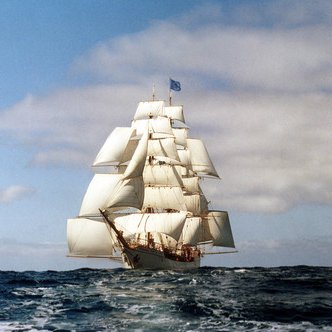South Georgia. Our first day on the island.

Right Whale Bay and Rosita Harbour.
Under the full moon veiled by the overcast skies, the ship finds a good anchorage in front of Binder Beach, a glacier moraine 5 cables in length that frames the Right Whale Bay to the West.
In the darkness we can still distinguish the countless seals and King penguins purposing around the ship. Wailing sounds surround us, the ubiquitous Fur seals calling each other.
After days of rolling and pitching at the sea, we finally could enjoy a quiet and peaceful night.
A setting that reveals its beauty by daylight, when we plan our first morning ashore at South Georgia.
The day is grey and wet, the wind blows. The typical weather to expect on the northwest area of the island.
The first striking difference to all the Antarctic landings that we were accustomed to was the amount of green colour in the landscape. There, in front of us lies a flat beach teeming with wildlife. Behind, the tussock grass covered slopes rise above the beach, so refreshing after almost monochrome, white blue, grey and black Antarctic colour palette. Further in the distance, high rugged mountains with peaks shrouded in low lying clouds and mist complete the beautiful scenery we are about to visit.
Finding a landing site proved to be quite challenging due to the unusually large amount of wildlife and significant surge alongside the shoreline. Eventually the guides found a reasonable good spot, however the curiosity of king penguins and seal pups quickly attracted them to the landing site. No matter where you find an open space between them, they invariably gather around us. Once we managed, it was time to start our walk exploring the place. Weather was calm, but rainy. After all, the area we are in is one of the wettest in the world. For keen photographers, the weather like this, is a blessing and curse at the same time, having a nice gloomy or moody scene to photograph but constantly fight with rain drops on the lens.
We made our way towards the main King penguin rookery. An area filled with adults as well as chicks. Many of the parents still tended for unhatched eggs, a tasty price for large number of skuas patrolling the skies above the colony. An egg is a vital source of energy and nutrients and they take every opportunity to snatch one from the penguins. A small waterfall frame the large number of penguins to the south. Not far from there, a group of elephant seals are resting on the beach surrounded by penguins and always present, curious seal pups. Among those we spot a rare leucistic Fur seal pup, a light yellow body that stands out amongst it's many brother and sisters. Weather, although still rainy, provided a short time of weak sunshine, opening the cloud coverage in the skies for a brief moment. It didn't last too long and soon, the beach was back to it's previous wet and gloomy state. At this point we were already walking back to the landing site, finding it significantly emptier than when we arrived. It didn't take too much time to attract the curiosity of wildlife again. Here, the first introduction to South Georgia landings ended and we said goodbye to Right Whale Bay. Back on the ships we cleaned the deck while the crew heaved the anchor. We were on our way to the next landing site leaving the misty shores of Right Whale Bay behind.
For a couple of hours we motor along the open coast, off the shelter of coves and bays. The ship rolls again, but soon she gets into the calmer waters of Rosita Harbour.
Once there, though windy and rainy, the shoreline is much calmer. Again, the just about three months old Fur seal pups show their nosiness with our affairs. Walking up the slopes, still some of them show up, here mostly mothers still nursing. As the season reaches its end, the youngsters have to start fending for themselves and the adult females spend less and less time with them. The site, besides offering some good wildlife spotting opportunities, provides a good terrain for hiking a bit inland.
Rosita is not home for any penguin rookery, but of course some kings and a handful of Gentoos show up.
Valleys, hills and mountains sometimes appear behind the mist. All carved in the past by vast glaciers that now have receded and are out of sight far inshore. A very different sort of landing than the morning one, but that will help to get a picture of the island’s characteristics as the days pass by and we have the chance to check different areas.







